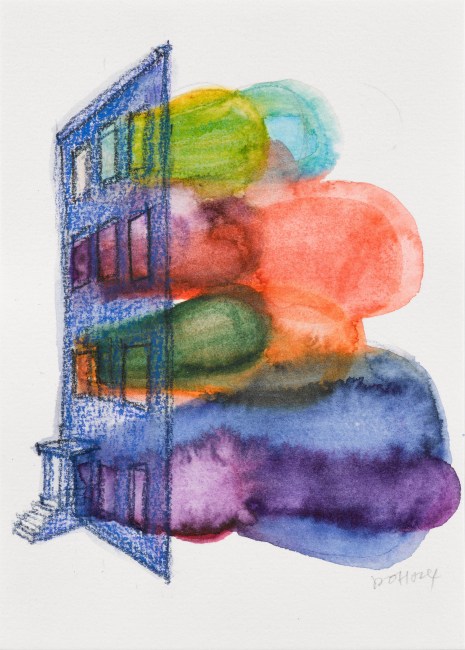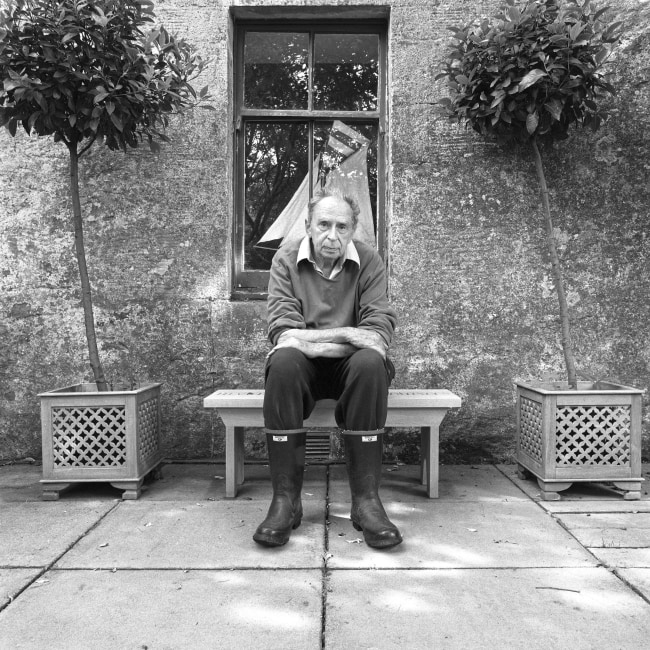Information
This exhibition by American artist Francesca Woodman includes five large-format photographs presented for the first time along with a selection of some 30 photographs from the key formative periods in Francesca Woodman's career - Boulder, Colorado; Providence, Rhode Island; Rome and finally in America again at the MacDowell Colony, New Hampshire, and New York in 1980.
Released for the first time by the Estate of Francesca Woodman, the five photographs from a series entitled Swan Song were originally produced for the artist's graduate exhibition at Rhode Island School of Design in 1978. Forfeiting the intimate scale characteristic of her work, these one metre square images move the medium of photography away from its expected format of flat print on the wall by exaggerating the scale, and alluding to an alternative space. The five prints in this exhibition all share a similar rhythm and pattern that marks the continuity within the series. The same props are used throughout - fur, feathers, wire and a white sheet that both covers and supports Woodman's elongated, fragmented body. The prints were deliberately torn in order to resist the square format of photography as well as, when unframed (as they were installed in her graduate exhibition), to further soften the edge between the image and the wall. Woodman was to return to the larger scale towards the end of her career in 1980.
Woodman tested the boundaries of bodily experience in her work. Using her own body in various stages of transformation, deformation, alteration and effacement, the ensuing photographs suggest a strong sense of self-displacement. Often nude except for individual body parts covered with props, sometimes wearing vintage clothing, the artist is typically sited in empty or sparsely furnished, dilapidated rooms, characterised by rough surfaces, shattered mirrors and old furniture. In some images Woodman quite literally becomes one with her surroundings, with the contours of her form blurred by movement, or blending into the background, wallpaper or floor, revealing the lack of distinction of both - between figure and ground, self and world. In others she uses her physical body literally as a framework in which to create and alter her material identity. Holding a sheet of glass against her flesh allowing its transparent surface to frame her face and body. By squeezing her body parts against the glass and smashing her face, breasts, hips, buttocks and stomach onto the surface from various angles, Woodman distorts her physical features making them appear grotesque.
Through fragmenting her body by hiding behind furniture, using reflective surfaces such as mirrors to conceal herself, or by simply cropping the image, she dissects the human figure emphasising isolated body parts. In her photographs Woodman reveals the body simultaneously as a deeply constituted active subject that is the producer of meaning; that although insistently there, is always somehow absent. This game of presence and absence argues for a kind of work that values disapperance as its very condition.
Selected Images
-
![]()
Installation View
-
![]()
Installation View
-
![]()
Installation View
-
![]() On Being an Angel, Providence, Rhode Island, 1977 (P.0860
On Being an Angel, Providence, Rhode Island, 1977 (P.0860 -
![]() Untitled (from Swan Song series), Providence, Rhode Island, 1978 (BFA.06)
Untitled (from Swan Song series), Providence, Rhode Island, 1978 (BFA.06) -
![]() Untitled (from Swan Song series), Providence, Rhode Island, 1978 (BFA.07)
Untitled (from Swan Song series), Providence, Rhode Island, 1978 (BFA.07) -
![]() Space2, Providence, Rhode Island, 1975-1978 (P.008)
Space2, Providence, Rhode Island, 1975-1978 (P.008)





































